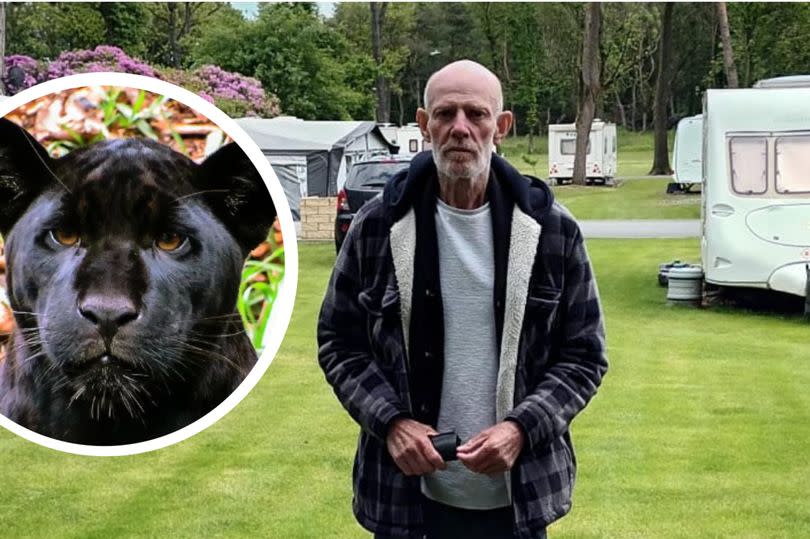Man traumatised after being 'attacked by a cat the size of a large dog'

A man says he has been mentally scarred after being attacked by a 'cat' that was the size of a doberman. John Broomhead says his life changed in 'an instant' as the 'huge' animal struck him while he was extinguishing a barbecue on a caravan holiday.
The 68-year-old believes the animal was so big, it could have killed him. Almost two years on from the terrifying ordeal, John still suffers nightmares about it.
John, from Aintree, Merseyside, was on a caravan trip to Tansley, Derbyshire, at the time of the ordeal in July 2022. He told Derbyshire Live: "It was just a normal day. We'd been having a nice evening with friends but at around 11pm, we decided to call it a night and I went to put out the fire.
"I heard a rustling noise but, obviously thought nothing of it. In the corner of my eye, I could see a black shadow moving; at first, I thought it could have been a dog or a cat - but it was huge. I'd say it was three or four times the size of a regular cat, maybe a similar size to a doberman dog.
"Its eyes were bright yellow and it had a long tail - I couldn't believe what I was seeing, some sort of cougar or leopard. Before I knew it, the eyes were coming towards me. In what felt like an instant, the cat had moved from 40 yards away to about half that distance. I had no time to react, I turned around a threw myself into the caravan - never in my life had I been so scared.
"My partner couldn't believe what I was saying. 'A big cat?' she said. She wouldn't have believed me if not for the fear in my eyes. She'd never seen me react to anything in such a way, I feared for my life in the split second that thing was charging at me. If I didn't get away, I'm certain it could have killed me."
John says he is traumatised following his lucky escape, adding that he won't walk to the toilet or take a shower at the caravan park alone, in fear of another attack. He added: "People struggle to believe me when I tell the story, but I know what I saw. It's not just me, as well. No one would believe me until I met another man in the caravan park and we spoke about what I saw. He described the exact same animal to me, and it was just down the road.
"Another person said they saw a mangled carcass on a bike track nearby, no cat, dog or fox in this country could've done that much damage. It's terrifying to think that someone could be attacked anytime in the area, I still have nightmares to this day - whether I'm in Liverpool or Tansley, my guard is always up."
While government body Defra says there has been no credible evidence of big cats in the UK, Derbyshire has had its fair share of 'big cat' sightings over the years, the most recent of which came in March last year. A dark figure of a creature thought to be a big cat was spotted in some grassland near Alton, Chesterfield.
There was another sighting back in October 2022, when a hiker filmed what he thought was a panther feeding on a sheep carcass in the Peak District countryside. In August, a photo dubbed the 'clearest ever' picture of a big cat in the UK was unearthed by documentary filmmakers, believed to have been taken in Smallthorne, Staffordshire.
Experts say that if it is genuine, it is 'probably the best photo of a British big cat that exists'. The image is featured as one of several potential pieces of evidence supporting the existence of such cats in the British countryside.
Danny Bamping, of the British Big Cat Society, told WalesOnline that any big cats living in the wild would be 'a mixture of hybrids and ferals'. These hybrids may be the offspring of larger cats, he explained, though any such animals would be unable to breed themselves.
"You can also have hybrids from larger cats that have interbred. So there is the opportunity of finding something unique in the British Isles in terms of a feline that is a hybrid," he said. "When they become hybridised, that's where the DNA stops because they can't breed."

 Yahoo News
Yahoo News 
